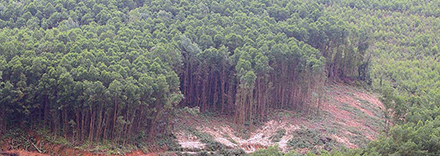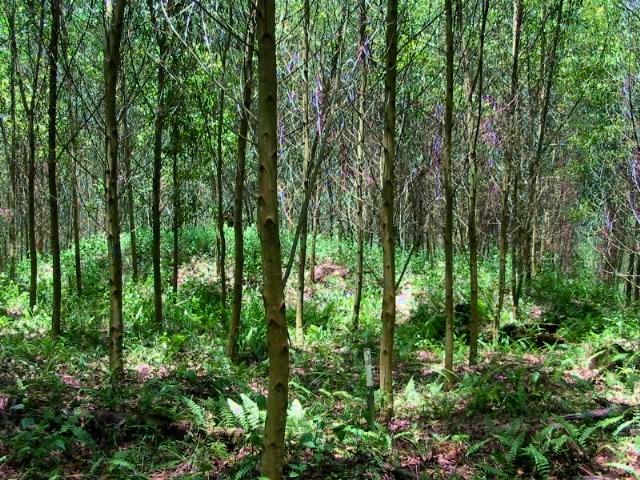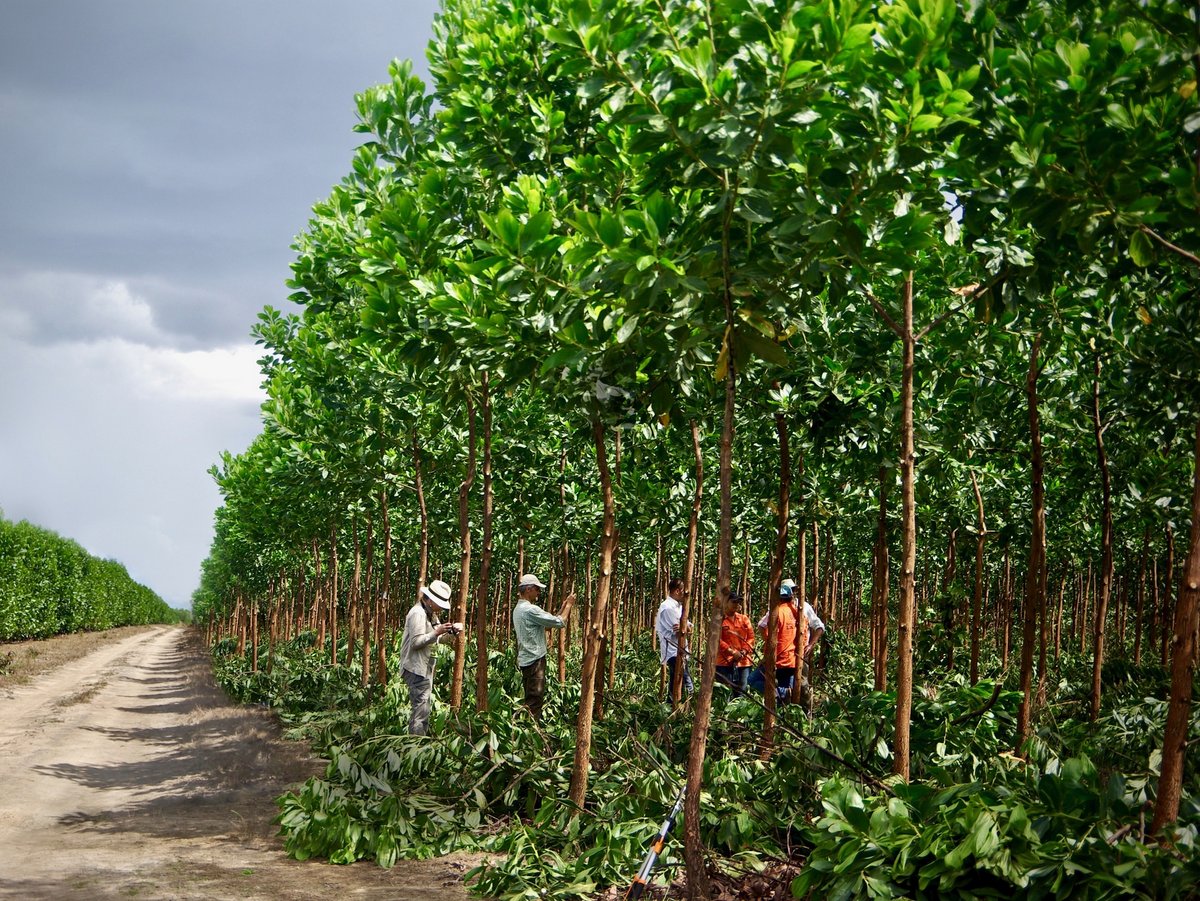Shareholding in 2005 and the company was known as Oji Plantation Forest Laos Co. Mangium X auriculiformis hybrids and A.

Timberbiz Acacia Plantations At Risk From Fungus In Vietnam
Plantations are thinned at five and eight years and the trees are harvested between the 10th and 12th year.

Acacia plantation forests. Industrial forest plantations are playing an important role in the forestry sector for both economic and environmental reasons. The main reasons for thinning are to produce bigger trees and help recoup costs Nay Myo Aung said. Commonly referred to as wattles acacias.
Bac Kan is a mountainous province in northeastern Vietnam where the tropical climate is characterized by tropical monsoons divided into distinct rainy and dry seasons and the annual. It costs about K800000 to plant one acre of the trees he said. Acacia forest is Australias second most common forest type after Eucalypt forest with 108 million hectares or 82 of Australias total native forest area.
The State Government of Sarawak has allocated 490000 hectares of land for the planting of acacia trees. Acacias also have the valuable ability to fix atmospheric nitrogen. Crassicarpa and Acacia hybrids are among the most dominant trees in forest industrial plantations in Southeast Asia countries.
The transfer of Oji shares in LPH happened in March 2017 to TAFF and the company was renamed to Mekong Timber Plantations Co. The carbon stock in the plantation forests of Acacia and rubber is compared against the natural forest in Table 5. This paper reviews evidence of its obvious benefits and its negative impacts on biodiversity.
Acacias are grown under diverse conditions ranging from deltaic soils in. Harvest residues can play a crucial role in conserving nutrients for recycling in forests but little is known about the rates of decomposition and nutrient release from these residues following logging in tropical acacia plantations. In this study the value of carbon stocks for natural forest were modified from the report by Ratnasingam et al.
In the last 15 years the development of industrial plantation forest has grown rapidly. Plant species widely developed is fast-growing plants fast growing trees such as Acacia crassicarpaCunn ex Benth. In 2014 the total area of plantation was 75221 ha and 20966 ha of this area was certified by FSC.
The pulp and paper project has Sarawak Forests Department itself as its project proponent. It is a multipurpose tree used in agroforestry forestry and for restoration of degraded lands. Crassicarpa are the most important plantation species estimated to be 21 M ha in 2019 supplying 206 M m3y1round wood.
Acacias are remarkably varied in appearance and habit ranging from low-spreading shrubs to trees more than 30 metres tall. Acacia mangium can be planted at a density of 1200 seedlings an acre. Acacia mangium Willd also known as mangium is one of the most widely used fast-growing tree species in plantation forestry programmes throughout Asia and the Pacific.
Establishment of short-rotation plantation forestry using Acacia mangium. Acacia hybrid plantations have the potential to provide several environmental benefits with fast-growing Acacia plantations expected to reduce the pressure on native forests as a source of industrial raw materials. Mangium plantations on Melville Island.
Some fast- growing species of tropical acacias such as Acacia mangium A. The area of planted forests has been increasing rapidly during recent years. Sarawak forest department acacia plantation project Malaysia.
Indonesia Malaysia Vietnam. First established in the late 1990s these plantations have now expanded to more than 20 000 hectares. Vietnam has established 11 million ha of acacia plantations for wood production managed on 5- to 10-year rotation cycles.
Nearly 50 of the resource is managed by small growers holding 15 ha woodlots. This first trial planting started in 2000. Its desirable properties include rapid growth good wood quality and tolerance of a wide range of.
It is also highly invasive in many regions where it has been introduced outside its native range. Acacia plantations have emerged as an important resource for supporting the rural economy and national export revenue. One of the main species for industrial plantations.
A comparison of the net carbon stocks were carried out between natural forest Acacia and rubber plantations. Almost 1000 species of acacia occur in Australia making it the nations largest genus of flowering plants. Acacia and eucalyptus are very popular plantation species and in 2014 alone 399000 m3 of timber was harvested from these planted forests.
Devoted to forest plantations using species such as Acacia in Vietnam. Ltd in January 2018.

Greenpeace Acacia Mangium Plantation In Indonesia

Greenpeace Acacia Mangium Plantation In Indonesia
Https Www Tandfonline Com Doi Pdf 10 2989 20702620 2014 999301

Acacia Hardwood Teak Patio Deck Outdoor Furniture

Special Issue Sustaining The Future Of Acacia Plantation Forestry News From National Inquiry Services Centre

A 10 Year Old Thinned Stand Of Acacia Mangium In Merbau South Sumatra Download Scientific Diagram



0 comments:
Post a Comment